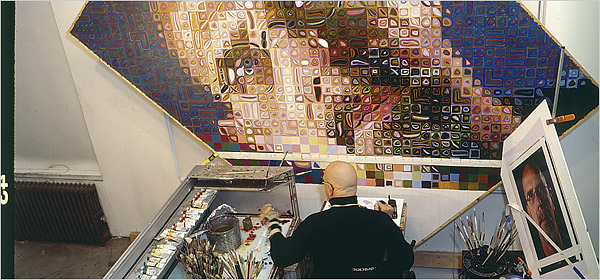This is an incredible response Anthony! Thank you for such a detailed info, you of course is the only artist who is generous in giving explanations to almost every question I was asking in the messenger😉 and would like to tell you how your answers have helped me a lot, although the place I’m living in absolutely doesn’t help. I’ve tried for two years to paint using a monitor but this monitor was small, may be you don’t believe , but in using my iPhone 6 as monitor and for economic reasons i can’t afford larger screens.
As you’ve explained, I taught myself at the start to guess the colors off the screen but it was very difficult and aching to the eyes since the backlit screen won’t allow to judge the values or colors easily, so the works I’m working on turned to be good but not to the level that I was aspiring to over the time since I’m seeing daily more wonderful works by a number of excellent representational artists who are over the seas, the place I’m living in (in Jordan) is a hell for realist artist and an absolute grave! The guys here just don’t understand ( it’s unbelievable when you go to all galleries and hear the same matter each time; (like; hyperrealism is just copying!)
Then i started searching in the web and social media and I found that photographs played a major role in producing respectable artworks, and I mean by that the exacting of things portrayed whether it’s portrait or still-life, this is, to me at least, what Iam looking for, so I begun printing the images and the artworks were moderate in sizes, then i noticed the problems with going larger. At this level, my works were getting better even if they took long time to finish but however there wasn’t deadlines for them, so i was working slowly. But i know that to you and to number of experienced contemporary artists this isn’t an obstacle to producing quality artworks.
For the artist Ann Schuler, which i May have noticed her name before but never looked to her artworks, are her artworks photorealistic ?
Also I’ve heard before about Robert Clause, however, I’ve never seen any work of contemporary artists in person.In fact there are few artists who share info or shots of their process while working, since he’s may be the oldest known hyperrealistic artist, his name is quite known, thank you for sharing these images of these talented photorealistic artists, I’m sure I’ll look to them in the social media, I’ve come across some highly talented and renowned international names such as Robin Eley, Eloy Morales, and the incredible Marco Grassi! I’ve found myself that I could learn so much by knowing the personal experience of these respectable artist, including you.
As you’ve mentioned, I’m amazed how you could read my mind😉 about difficulty to get visual info of color and value from digital screen, I myself have asked this many times but it seems that there isn’t a direct comparison between the subject in the monitor screen and the dynamic physical paint we’re working on unless ( as you’ve mentioned) the calibration or the recent websites or applications dedicated to make this process easily and approximate, may be it’s the only exact option at the moment. I’ve played with golden virtual paint mixer for a while, the website you’ve mentioned is terrific too!



